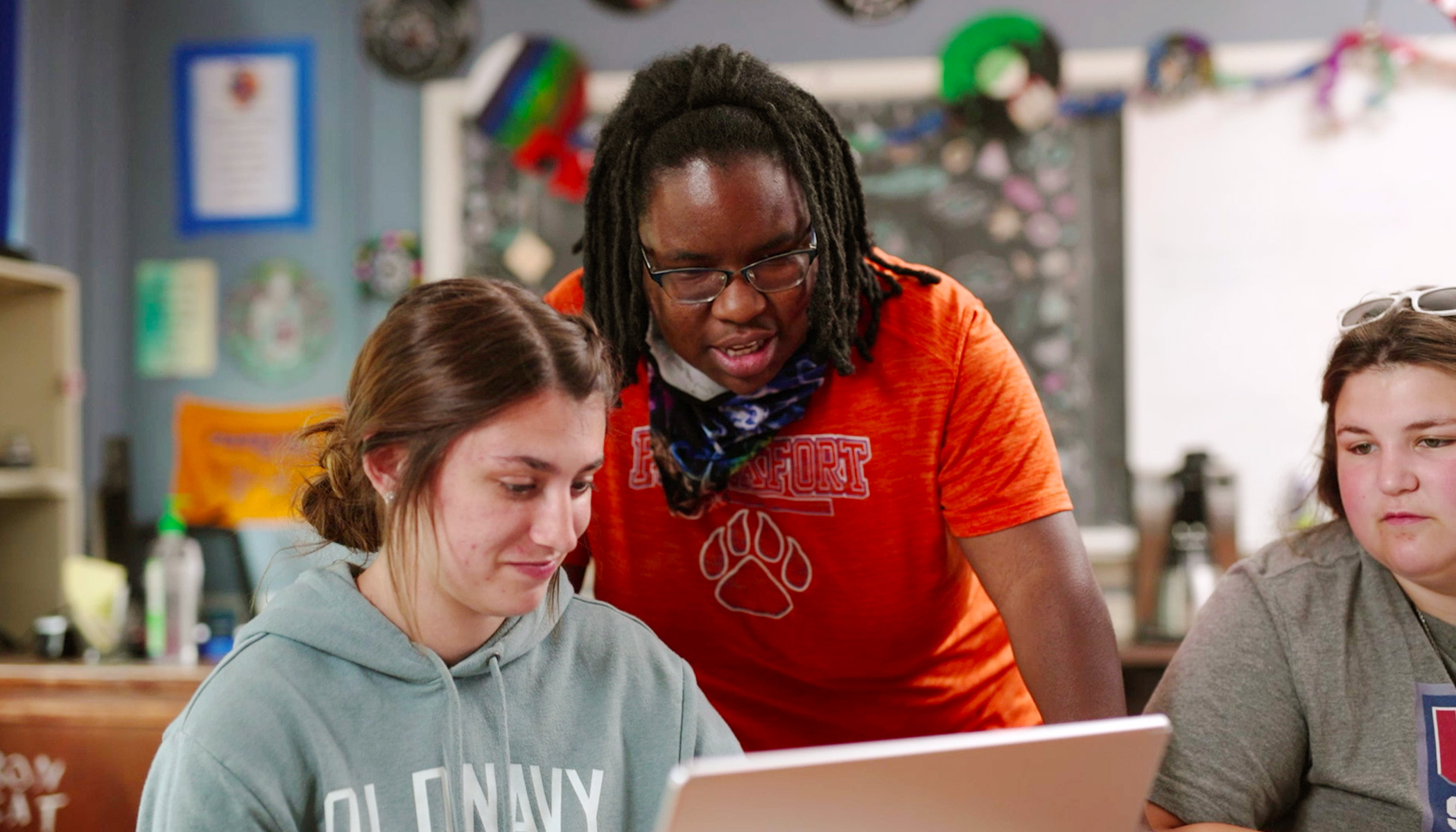May 2, 2022 · 5 min read
5 Ways To Support Teacher Well-Being

We all come together to honor and celebrate our teachers every May during Teacher Appreciation Week. But, now — more than two years into a global pandemic — it’s time to go beyond appreciating teachers with words and commit to supporting their well-being all year with action and resources.
It’s a challenging time for teachers. We’ve asked them to learn entirely new methods of teaching, and to tend to the trauma and stress that students are experiencing right now. These pressures are taking their toll. At the beginning of the pandemic, the Yale Center for Emotional Intelligence asked more than 5,000 teachers how they were feeling. Anxious and overwhelmed rose to the top. Since then, according to the U.S. Bureau of Labor Statistics, the number of educators working in public education has decreased by 600,000.
It’s clear: Teachers are at a very real risk of burnout. And teacher stress affects students’ well-being and achievement, threatening the well-being of the entire education system. If teachers lack belonging and connection, their students will feel the same way, which will impact their readiness for learning and development.
But, here’s the good news: We can all start supporting teacher well-being right now — better equipping them to meet the needs of their students
Here are five proven ways school and district leaders can provide support for teacher well-being, helping teachers reengage with what they love about the profession and revitalizing their relationships with their students.
Read more: The Future of Our Work in Education
1. Create intentional settings for staff and educators to reconnect and heal.

Strong and trusting relationships between adults are just as crucial as those between teachers and students. We can’t assume adults are making these connections during free moments on busy days, particularly when educators report feeling more responsibility than ever.
At Van Ness Elementary, head of school Cynthia Robinson-Rivers is intentionally working to create dedicated time and space for teachers to connect and de-stress. Teacher schedules include frequent breaks and well-being support from an on-site clinical psychologist. There are also dedicated school spaces for teachers to have mindful moments and time for physical activity, including community yoga.
2. Offer teachers professional development to help them connect with their students.
As our students and teachers continue to navigate uncertainty, instability and trauma, it’s crucial to prioritize environments that center healing and equity, and recognize and celebrate both students’ and teachers’ culture and identity. Kingmakers of Oakland provides a great example of how professional development can support these goals. The nonprofit organization leads trainings for educators and district leaders on culturally responsive curriculum. Their efforts are supporting collaborative learning communities to share, plan, build and implement safe learning environments.
Read more: Equipping Teachers With New Tools and Research To Support Their Students
3. Use advances in the science behind relationships as the foundation of a healthy and rigorous learning environment.
Positive, trusting, healthy relationships cannot be left to chance. There must be intentional design in addition to resourcing and monitoring how these designs are built and fostered in our learning environments.
To that end, New Village Girls Academy is exploring research-backed strategies to ensure strong relationships between teachers and students through a partnership with the University of California, Los Angeles and University of Southern California. Their multi-year collaboration will evaluate whether teachers’ ability to self-regulate helps to co-regulate with students and create stronger conditions for student-led work.
4. Leverage tools that make it easier for teachers to foster strong relationships with their students.
Over the past few years, in particular, we’ve seen technology play a critical role in helping people stay connected. When used with intention, it can be leveraged to bolster relationships between teachers and students.
For example, Along, a teacher-student connection builder created by our education team and our partners at Gradient Learning, helps students and teachers connect. Based on the science of how people relate, Along is designed to be an easy way for teachers to get to know students on a deeper level, so students feel seen and motivated to participate and learn. Research-backed conversation prompts in Along equip teachers to help students open up and build lifelong skills in areas such as organization, motivation and stress management.
Read more: Q&A: Setting Up Students for Success in 2024 and Beyond
5. Give space for teachers to share what they need.
By listening to the needs of their community, leaders can prioritize and adapt strategies to improve teacher and student well-being with insights from those who know it best — teachers and students. They can do this by conducting more robust school climate surveys that look at how well a school is supporting teachers’ and students’ sense of belonging and connection.
The well-being and development of our students starts with how we care for our teachers, and how we support them with resources to care for our students. We’re committed to the development of accessible resources that help districts and schools prioritize well-being for teachers. Help spread the word by sharing these strategies with your school community.





